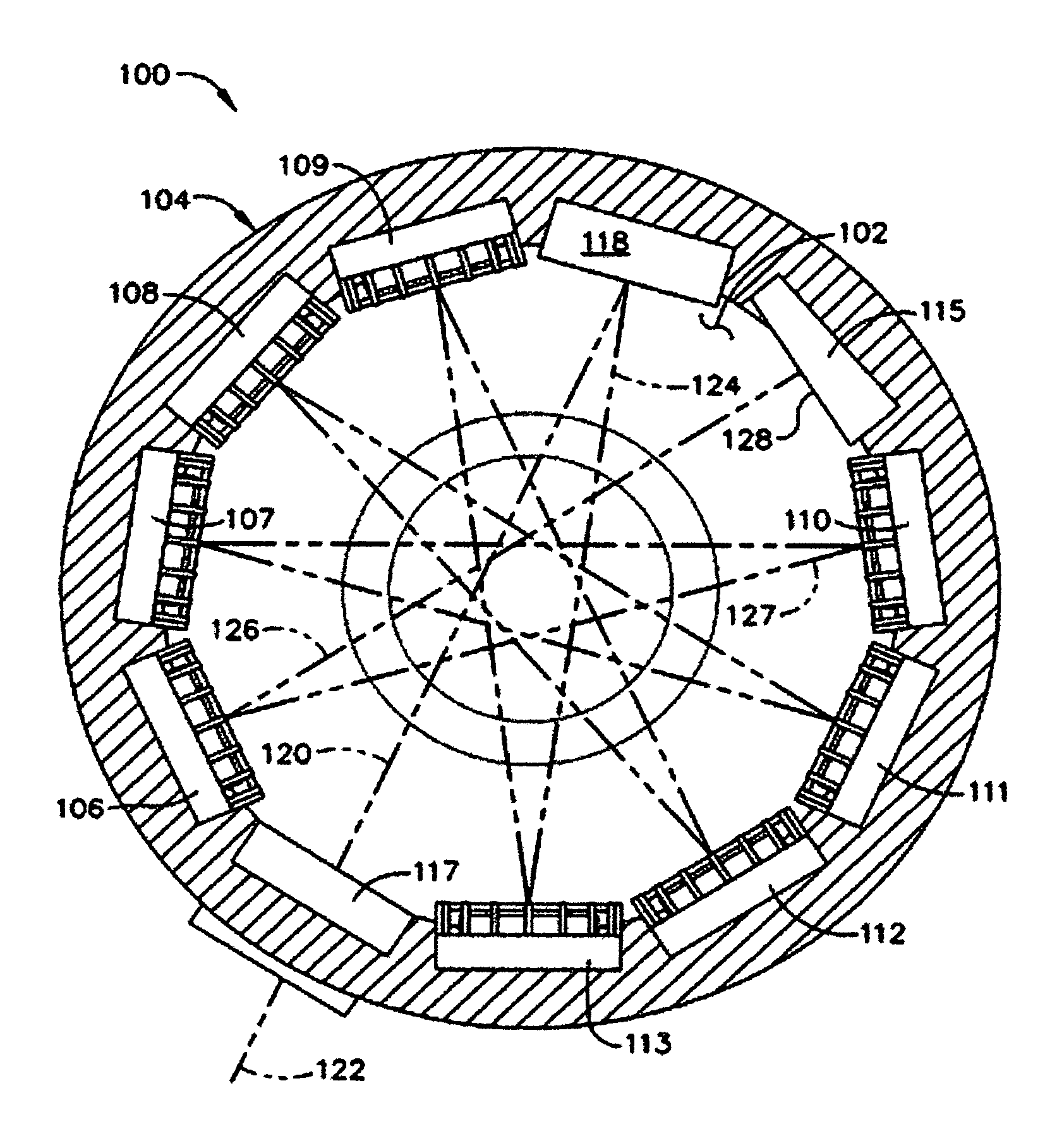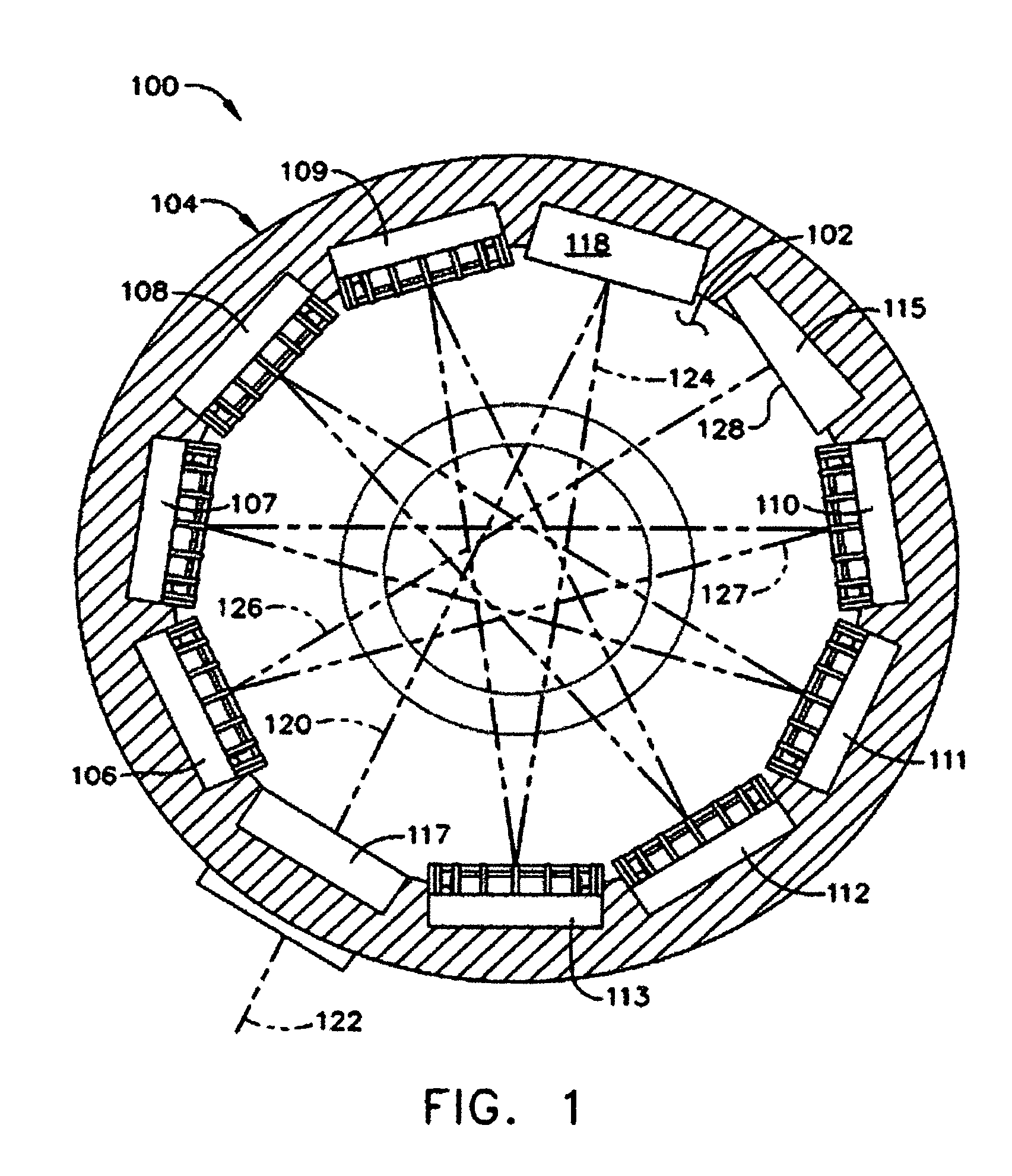Star configuration optical resonator
a technology of optical resonators and star configurations, which is applied in the direction of optical resonator shape and construction, laser details, active medium shape and construction, etc., can solve the problems of limiting the resonator's ability to produce near diffraction-limited beam quality, increasing the overall length and weight of the resonator, and the cumulative beam propagation path length required for the laser to travel between ama modules adds significantly to the overall length and weight of the r
- Summary
- Abstract
- Description
- Claims
- Application Information
AI Technical Summary
Benefits of technology
Problems solved by technology
Method used
Image
Examples
Embodiment Construction
[0021]The present invention is to an optical resonator capable of providing a HAP SSL in a more highly compact resonator structure than that available in the prior art. The result is a lighter weight, smaller sized device that is more suitable for portable applications than prior art optical resonators. It does this with a cavity arrangement of optical elements that present the laser radiation with shorter transmission distances between elements, and which present the radiation itself at a more shallow angle of incidence to the element's active surface. The shorter transmission distances make the resonator less sensitive to mirror alignment and more practical for integration onto mobile platforms. The shallow angle of incidence permits more efficient AMA cooling, thereby allowing for greater output power while maintaining good BQ.
[0022]These benefits are realized by providing the cavity with a laser radiation propagation path which is substantially in the form of a {P, Q} star polyg...
PUM
 Login to View More
Login to View More Abstract
Description
Claims
Application Information
 Login to View More
Login to View More - R&D
- Intellectual Property
- Life Sciences
- Materials
- Tech Scout
- Unparalleled Data Quality
- Higher Quality Content
- 60% Fewer Hallucinations
Browse by: Latest US Patents, China's latest patents, Technical Efficacy Thesaurus, Application Domain, Technology Topic, Popular Technical Reports.
© 2025 PatSnap. All rights reserved.Legal|Privacy policy|Modern Slavery Act Transparency Statement|Sitemap|About US| Contact US: help@patsnap.com



